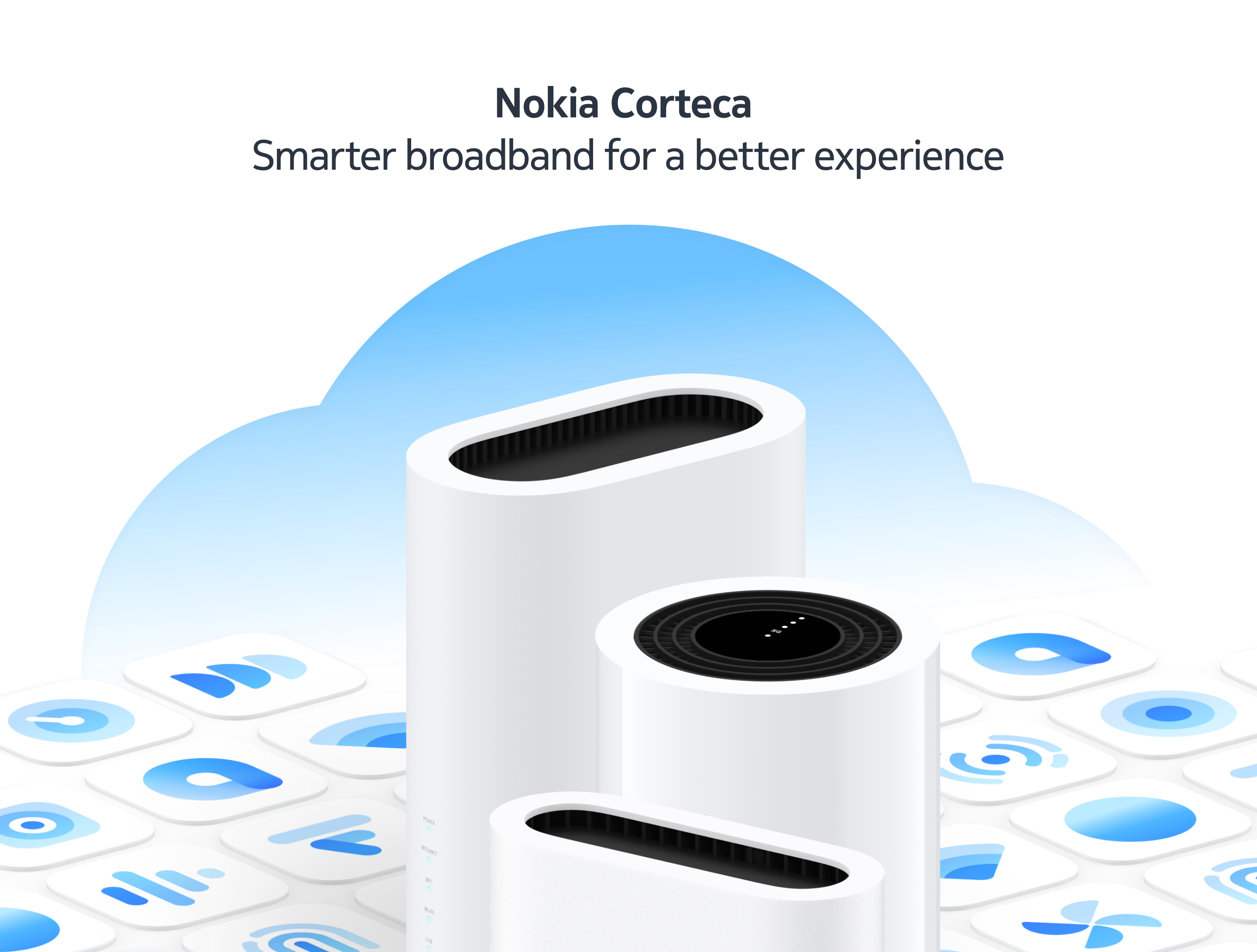Broadband and Wi-Fi have become synonymous when it comes to the in-home connectivity experience. However, consumers continue to struggle with Wi-Fi reliability and management, and communication service providers (CSPs) are still in need of better paths to broadband monetization.
According to Laszlo Gyalog, who leads broadband devices marketing within Nokia’s Fixed Networks Division, both parties’ woes can be addressed by adding intelligence at each stage of the home network — from the in-home router, through the home and into the cloud. Doing so, he told RCR Wireless News, can help CSPs better monetize their broadband services and reduce cost, while increasing customer satisfaction and loyalty.
Gyalog broke down the benefits of smart, end-to-end broadband into three value propositions:
Unlock new revenue streams
Nokia’s new suite of products — called Corteca — includes new, value-added applications and a Marketplace. Nokia isolated value-added applications from the device software, decoupling their life cycles, which Gyalog explained means a CSP can introduce an application without waiting for the next software update to hit the market.
Further, the company has created an application marketplace that allows CSPs to browse the new, value-added applications, split into applications that benefit the end-user, like cybersecurity or gaming optimization, and applications that benefit the CSPs themselves, like device fingerprinting and speed tests. CSPs can “try, then buy” applications by first installing a selected application on a few broadband devices to gauge customer interest before committing. They can also install the applications in bulk, on thousands of devices at the same time.
From there, they can do things like bundle services to increase customer stickiness. For example, they can offer cybersecurity for free to customers on a higher-speed tier and require those on a lower tier to pay a small fee each month.
In fact, cybersecurity is a particularly interesting use case: Protecting your home against bad actors involves installing cybersecurity applications on every device, which is time consuming and expensive. Moreso, many IoT devices like thermostats and appliances simply cannot be secured because security software can’t be installed on them at all.
But by working with cybersecurity and privacy company F-Secure, Nokia installed cybersecurity measures onto its broadband device directly. “That single installation will protect the whole household,” said Gyalog. “So, the end user doesn’t have to install any software on their devices and IoT devices will be protected.”
Deliver an exceptional customer experience
Corteca provides both local, automated Wi-Fi optimization and cloud-based Wi-Fi optimization, making it possible to solve connectivity issues in real-time and automatically. This means that a problem can be solved before the end user is even aware that there is a problem in the first place.
Every five minutes, Nokia collects data from the Wi-Fi networks. Then, algorithms analyze the data and compare it against threshold values and take the necessary actions to resolve any detected issues.
Specific cloud optimization capabilities of the Corteca suite, according to Gyalog, include optimal channel selection and transmit power control.
Reduce operational costs
The calls that customers place to operator help desks can be costly from an operational perspective. Therefore, Nokia has implemented several features in the Corteca suite designed to reduce both the number and duration of calls made to providers’ help desks.
For example, one feature enables a real-time, holistic view of an in-home network, which is of particular interest to the customer care agent. “If someone calls the help desk, the agent can look into that in-home environment to get a real-time view of traffic patterns and so on,” Gyalog explained further. This means faster resolution for the customer and cost savings for the operator.
Gyalog claimed that when it comes to home broadband, speed is no longer the issue as most CSPs can easily deliver 1 Gbps or more. “The challenge, though, is that more than 40% of the broadband households experienced issues in the last year — that is the new battleground for service providers,” he continued.
Their next step, then, must be looking at how to generate revenue above and beyond broadband subscriptions by introducing new services and ensuring that subscribers get the best experience possible by intelligently validating a network’s performance.
Learn more about Corteca here.

